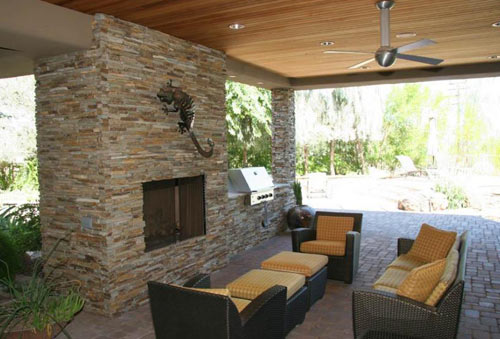Purchasing a home in need of renovation can seem like a daunting task for a lot of reasons. One of which is the idea of financing the renovation costs. It's hard enough these days to qualify for the mortgage alone but tack on an additional loan to renovate and it can appear impossible. Well there's no need to worry about that anymore! The latest thing to hit the mortgage world is called a 203k loan which allows you to incorporate the cost of renovation straight into your mortgage, one loan, one payment, one process. It's actually been around for a while but now more and more homeowners are being informed of this loan.
It's amazing that it's taken this long to come up with a 203k loan. To give you all of the details I'll leave it to an
article from MortgageLoan.com because they sum it up very simply. I can also testify that the loan is legitimate, we have gone through the process on the contracting end for a handful of projects using it. On our end it is quite the pain, the paperwork for the contractor is beyond complex and over the top to say the least, but in the end it's a win win situation. The homeowner is able to get into the house and do the renovations they desire and we stay busy with work in a less than ideal economy.
Alright, the loan details...
Foreclosed properties can offer some great bargains, but they often require a fair amount of repairs to make them livable. Fortunately, there's an FHA program - the 203(k) loan - that enables home buyers to roll the purchase price and estimated cost of repairs into a single mortgage right up front.
The FHA 203(k) mortgage can cover repairs, improvements or both on a residential property. Unlike traditional financing, which typically requires separate loans to purchase the property, finance repairs and refinance everything into a long-term mortgage when the work is done, the 203(k) program allows everything to be financed through a single transaction.
Find a property, prepare an estimate
To qualify, a homebuyer needs to identify a property they wish to purchase, then come up with an estimate of the cost of the work that needs to be done. For this reason, the program can't be used for homes purchased at a foreclosure auction - you won't be able to fully inspect the property and come up with a reliable estimate beforehand. But it can be used to purchase an REO (real estate-owned) foreclosed property that's being offered on the market - a real estate agent who specializes in REO sales can be helpful here.
There are a variety of service that provide local listings of foreclosed properties available for sale, including the online listings of properties reclaimed by the four major government-affiliated agencies that insure mortgages - Fannie Mae, Freddie Mac, Veterans Affairs (VA) and the Department of Housing and Urban Development (HUD) - the FHA's parent agency.
A 203(k) is not limited to the purchase of foreclosed properties - it can be used for the purchase of any single-family home that needs repairs or that the buyer wishes to improve.
Loan based on improved value of property
Once a sales price has been agreed to and an estimate prepared of the cost of the repairs or improvements, an appraisal will often be required. Usually, an appraisal of the property's value after repairs or improvements are completed is all that is needed, but sometimes an appraisal of the as-is value will be required as well. In the case of HUD-owned properties, an appraisal may not be necessary - the agency's own listing of the market value, along with an estimate of needed improvements, is often adequate.
The loan is usually set to cover the appraised value plus the cost of the improvements, or 110 percent of the predicted appraised value of the rehabilitated property. In the case of older homes, a 10-20 percent contingency fee must often be included in the estimate of repairs.
Can cover home expansion
The rehabilitation work can be fairly extensive. These may involve adding extra rooms, converting a multi-unit building to a single-family home, or a single-family property to multiple units. Luxury items may not be covered in the improvements, but the work may include certain amenities such as the addition of a patio or deck.
Buyers can do some or all of the work themselves, but must be able to show they are qualified to do so. Self-contracting can also drag out the application process - using a licensed contractor will make things go much more quickly, though the homebuyer can still do some of the work once the contractor has prepared the estimate.
Streamline option for minor upgrades
For properties which need only minor work, the FHA offers a variation called a 203(k) Streamline, which provides loans of $5,000-$35,000. These can include painting, window replacement, basement refinishing, floor replacement or other improvements for which plans, consultants or engineers are not generally required.





























































